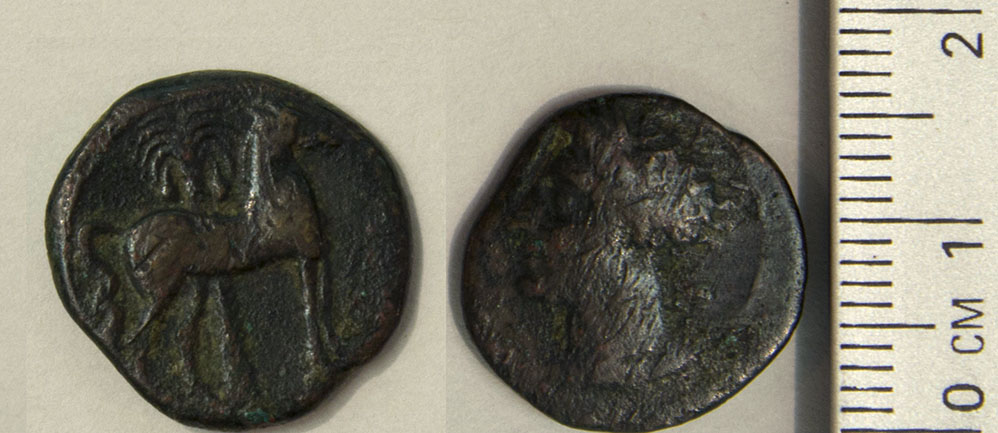Project Description
Carthage was a powerful city-state in North Africa near what is today Tunis, Tunisia. This powerful seafaring kingdom was allegedly founded by Phoenician Princess Dido to facilitate trade from the Phoenician capital at Tyre. On the obverse of the coin Carthaginian goddess Tanit is featured. On the reverse, there is a horse in front of a palm tree. Tanit was a mother goddess to the Carthaginians, and was often associated with the city of Carthage. The majority of Carthaginian coins were not found in Carthage, but in Sicily and Sardinia, places under Carthaginian control. Carthaginian coin manufacture did not begin until around 410 B.C.E, when Carthage started paying mercenaries to help them gain control of Sicily and other Greek city-states. Around the time this coin was minted, mercenaries and other disenfranchised groups from around the Mediterranean started to organize against Carthage as well as Rome. In response to this threat, Carthage nearly depleted its supplies of precious metals. Though most of our understanding of Carthage comes from the Greeks and Romans, the coins of Carthage can provide us with a fuller story.
-Constantine Botimer, Class of 2019

